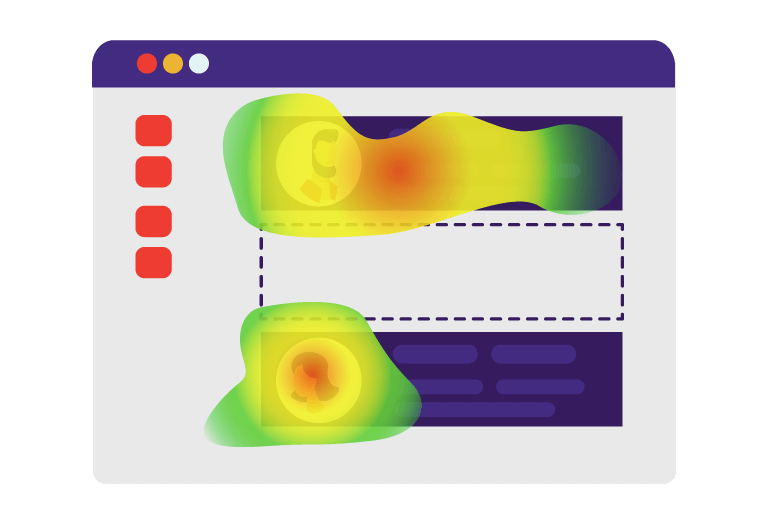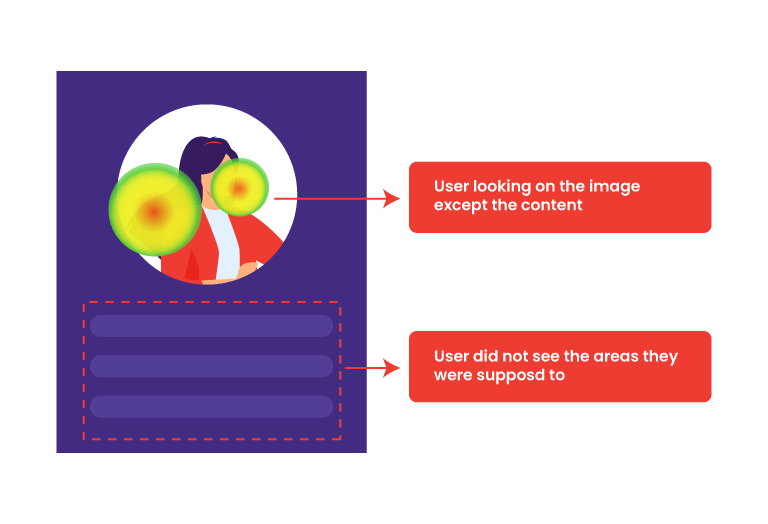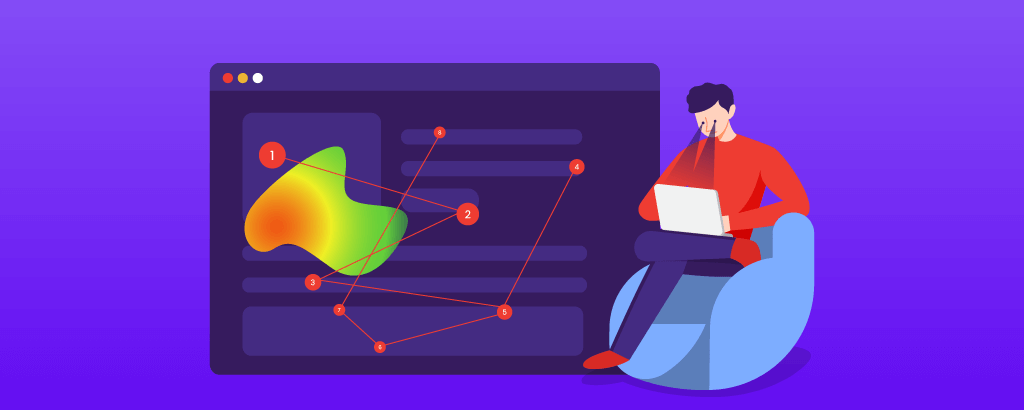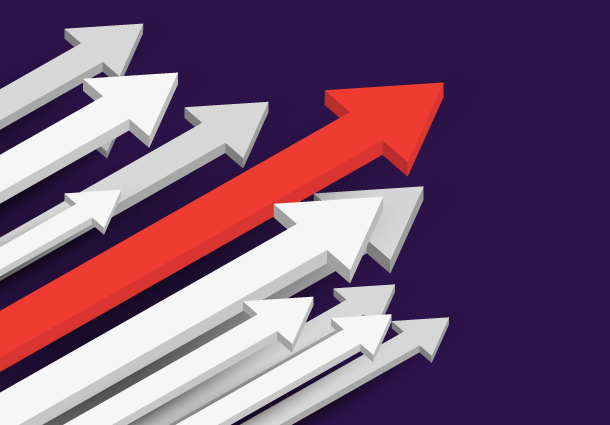Targeted Eye Tracking technology for insightful applications
In recent days, eye tracking has grabbed the eyeballs with regards to website testing and design. The testing sites are going to be using HTML. Researchers had the ability to produce the best heat maps. You can compare simple screen layouts and optimize it. You can also tackle every online advertising placement.
In recent days, we have been using eye-tracking to invent interactive, rich, and transaction-oriented interfaces. It is now extremely complex when you want to generate eye tracking results. Every interface has a number of states. People have the liberty to interact whatever way they deem fit. It is going to be extremely complex when you want to generate eye tracking results. People have the freedom to choose the way through which the task is completed. No eye tracker can let you know which state is deemed to be what when a specific person’s eyes are tracked. We need to analyze additionally when you want to separate all the interactions. There have been a lot of advancements in eye-tracking technologies when you want to simplify this process.
These are a few eye tracking usability testing methods.
Think Aloud methodology
Think Aloud (TA) is nothing but a customized usability testing method. Every person can speak aloud their feelings, thoughts and opinions with the aid of tasks related to usability testing.  You can get all this done with a facilitator’s support. They can tactfully interpret the process when they want to understand why people do things the way they do. When every person is going to face a number of screen interactions, we require better cognitive effort. When you add TA to this entire experience, it would be inappropriate to add plenty of cognitive load in the case of the Eye Tracking test online. When a person is going to face a number of screens, you get to face a number of additional eye fixations with Eye Tracking Usability Testing Software. The analysis can get delayed owing to eye fixations. Know more about user testing with eye tracking software, Eye Tracking tools for Usability Testing, Eye Tracking test online, Eye Tracking research, Eye Tracking software, Eye Tracking Usability Analysis, Eye Tracking tools for usability testing and Eye-tracking web Usability by reading further on targeted Eye Tracking technology.
You can get all this done with a facilitator’s support. They can tactfully interpret the process when they want to understand why people do things the way they do. When every person is going to face a number of screen interactions, we require better cognitive effort. When you add TA to this entire experience, it would be inappropriate to add plenty of cognitive load in the case of the Eye Tracking test online. When a person is going to face a number of screens, you get to face a number of additional eye fixations with Eye Tracking Usability Testing Software. The analysis can get delayed owing to eye fixations. Know more about user testing with eye tracking software, Eye Tracking tools for Usability Testing, Eye Tracking test online, Eye Tracking research, Eye Tracking software, Eye Tracking Usability Analysis, Eye Tracking tools for usability testing and Eye-tracking web Usability by reading further on targeted Eye Tracking technology.
Eye Tracking web usability methodology
Usability testing using eye-tracking software has caught the interest of considerable debates. There are many TA proponents claiming that their methods would find enough issues when you handle eye tracking. This would be more time-consuming, difficult, and expensive. Eye Tracking User Testing Software would be the right solution for you.
Many people use eye-tracking to determine how a website should be designed. Eye Tracking Usability Testing Tools can help you with this for Eye Tracking Usability Analysis.
You can try more things like driving and cooking while you go on and verbalize every step such as methods, actions, and time taken to complete it. Eye Tracking research
Retrospective Think Aloud
Retrospective Think Aloud is nothing but a usability testing method that has been in use for many years. All participants would have a chance to provide their opinion in this case.  It would be hard to think about what you accomplished during the task regarding Eye Tracking tools for usability testing. Usability labs would be set up with a notion to approximate many real-life incidents. We can see many users who are going to set up any kind of testing facilities such as lounge rooms or offices when you want to make the person familiar with the place. TA would ask people who want to talk to others. In this way, Eye tracking would be the only real and authentic way through which you can test any kind of rich application with no way to distract the participants. You should look in the direction where the people gazed, not where they thought they should have gazed. This way, we can let many people focus on all their tasks. They also would not have any trouble obtaining any kind of real physiological data with respect to what they have been doing so far. Faking these measurements would hold an impossible way. We do not need to assume where they would have looked while we want to understand things that would have gathered their overall attention. These are the questions every client needs to have answers to:
It would be hard to think about what you accomplished during the task regarding Eye Tracking tools for usability testing. Usability labs would be set up with a notion to approximate many real-life incidents. We can see many users who are going to set up any kind of testing facilities such as lounge rooms or offices when you want to make the person familiar with the place. TA would ask people who want to talk to others. In this way, Eye tracking would be the only real and authentic way through which you can test any kind of rich application with no way to distract the participants. You should look in the direction where the people gazed, not where they thought they should have gazed. This way, we can let many people focus on all their tasks. They also would not have any trouble obtaining any kind of real physiological data with respect to what they have been doing so far. Faking these measurements would hold an impossible way. We do not need to assume where they would have looked while we want to understand things that would have gathered their overall attention. These are the questions every client needs to have answers to:
- Where do these people tend to look at first?
- What are the things they don’t look at?
- What are the things they looked at before any usability issues happened?
- How would any people go on and learn about an interface?
Where do these people tend to look at first?
Eye-tracking would tend to measure any kind of unconscious behavior. This would provide everyone with the right data with which people simply would not be able to verbalize via their  general user research methods, especially using TA usability testing protocols. Psychology research shows us that the majority of human behavior would be occurring at an unconscious level. We should be knowing that the human eye would be capable of making up to 5 fixations per second. This is going to occur below any person’s conscious awareness level. Within a 30-second scan of any typical homepage, any customer would be looking at 150 items on your page. You should also not forget that your users would not be able to tell you directly where their eyes would go. This is where eye-tracking comes into play. With this, we can say that visual attention data would act in correlation with any kind of behavioral performance metric. If any person doesn’t “view” something, they would not be clicking at it. It would give you an idea of where any people would look when they glance at your screen. This way, they would be able to find a target and carry out a usability task. This is what, Rob Tannen, an eye-tracking expert has to say: [Eye tracking] does hold value when it comes to the secondary diagnostic tool.
general user research methods, especially using TA usability testing protocols. Psychology research shows us that the majority of human behavior would be occurring at an unconscious level. We should be knowing that the human eye would be capable of making up to 5 fixations per second. This is going to occur below any person’s conscious awareness level. Within a 30-second scan of any typical homepage, any customer would be looking at 150 items on your page. You should also not forget that your users would not be able to tell you directly where their eyes would go. This is where eye-tracking comes into play. With this, we can say that visual attention data would act in correlation with any kind of behavioral performance metric. If any person doesn’t “view” something, they would not be clicking at it. It would give you an idea of where any people would look when they glance at your screen. This way, they would be able to find a target and carry out a usability task. This is what, Rob Tannen, an eye-tracking expert has to say: [Eye tracking] does hold value when it comes to the secondary diagnostic tool.
Eye Tracking Analysis for Revealing Concealed Aspects
Eye-tracking would let us understand what screen the user didn’t take a look at. The data would also reveal what space would go as a waste in the design. It can also let you understand what you ignored with respect to the page areas.
Evaluating User Interactions and Assessment Points of Interest
Eye-tracking would allow us to understand what people would be looking at consciously and unconsciously. It would give you an idea of where any people would look when they glance at your screen. This way, they would be able to find a target and carry out a usability task. This is what, Rob Tannen, an eye-tracking expert has to say: [Eye tracking] does hold value when it comes to the secondary diagnostic tool. When we look at it with a usability testing context, eye tracking would not help you determine any usability problem presence. It would help you determine what problem in conjunction led on to performance data, user self-reporting, and facilitator observations.
Deciphering Learning and Understanding Mechanisms
Eye-tracking plays a major role when it comes to change management as well as training when you introduce any new system which can staff within your business. Where would any people take  a look at the first time they see your application? Do you have an idea of the second as well as the third time? Eye-tracking would let people understand the way to interact. It can be classified as follows: A new user who would visit the website frequently The new user would take pride in skipping along with the right-hand side panel along with the selections as well as main page information when they want to finish their task. A frequent website user The frequent user would be skipping their task back and forth in a less frequent manner in comparison to any new user. They would also focus on completing any of their tasks. An expert website user The focus of an expert user would be highly directed. They can complete any task without much effort. Role-Played Customer Service With all the data that we received so far, we can understand much more about eye-tracking and what role it has played so far. This would also provide us with a clear insight into how we can avail it for usability testing. With perfect planning, anybody can handle eye tracking in an efficient manner.
a look at the first time they see your application? Do you have an idea of the second as well as the third time? Eye-tracking would let people understand the way to interact. It can be classified as follows: A new user who would visit the website frequently The new user would take pride in skipping along with the right-hand side panel along with the selections as well as main page information when they want to finish their task. A frequent website user The frequent user would be skipping their task back and forth in a less frequent manner in comparison to any new user. They would also focus on completing any of their tasks. An expert website user The focus of an expert user would be highly directed. They can complete any task without much effort. Role-Played Customer Service With all the data that we received so far, we can understand much more about eye-tracking and what role it has played so far. This would also provide us with a clear insight into how we can avail it for usability testing. With perfect planning, anybody can handle eye tracking in an efficient manner.
Commonly Reported Eye Tracking Advantages
Eye-tracking would offer any user more unique advantages. This would go above and beyond any traditional TA. Some of the other widely noticed advantages would include:
- A more calm and relaxed testing environment where any participant would be able to give feedback within their own time constraint. This would allow them to find high-end usability errors.
- Many executives prefer eye-tracking owing to its compelling and strong physiological data which we cannot argue with.
- With Real-time eye-tracking data, you can observe everything in a better manner. This would lead on to more engaged user results.
In the case of TA, sometimes you would find it extremely hard when you want to know what the particular person would be talking about while they are testing.
Advantages of Eye-tracking in Usability testing
Even though there are a number of Eye-tracking datasets that we can record a number of times, you can only visualize and interpret them when you want to expose proper behavior which might be invisible. We can leverage any kind of an ordered list of fixations as well as an unordered list belonging to many overlooked elements): As an important step, you can note that eye-tracking would highlight many user experience factors as well as what they would see. The time it takes when you want to arrive at any given fixations: You can see what factors you need to understand. With the fixation length, you have to know about the comprehensible element. What is the number of fixations present per element: You can get this done when you find more related stuff on how useful, distracting, or contradictory every element could have been.
Briefly Stated: The Effect of Eye-tracking on the Learning Process
Many people offer various views on eye-tracking. On a recent note, we can see how people have been debating about eye tracking. Many tend to misuse the real meaning of eye-tracking. However, eye tracking has the ability to wow all its clients. There are many key factors involving user testing. Eye-tracking has a huge impact on businesses that want to leave their participants alone while handling the testing. The participants can view their findings using user testing methodologies. They can get every physiological data regarding their unconscious and conscious experiences. The data is going to be extremely vital for eye tracking.
How can Pattem Digital help you as your Eye-tracking research company?
With the help of Pattem Digital, an eye-tracking company, a renowned business that specializes in complete eye tracking services, you can maximize the potential of eye-tracking research. Our team of professionals is committed to offering unmatched assistance and guidance for your research endeavors. Join forces with us to explore the world of eye-tracking in greater detail and obtain insightful, data-driven perspectives. To learn more about how our specialized eye-tracking systems can take your research to new heights and produce significant results for your projects, get in touch with us right away.

